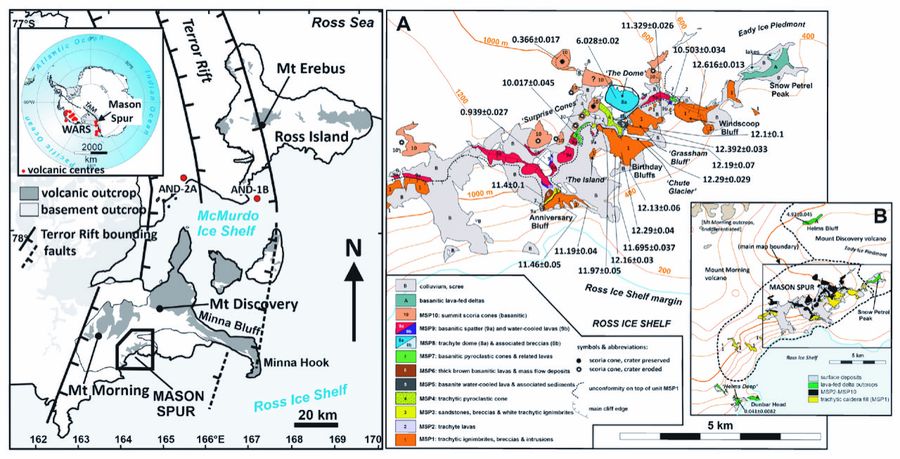The eruptive history of the long-lived Mason Spur volcanic complex (southern Victoria Land, Antarctica)
The eruptive history of the long-lived Mason Spur volcanic complex (southern Victoria Land, Antarctica)
A working group led by volcanologist J. Smellie (University of Leicester, UK), including researchers from the New Zealand Geological Survey (GNS Science, New Zealand), the New Mexico Bureau of Geology and Mineral Resources (USA), US Geological Survey (USGS, USA) and Istituto di Geoscienze Georisorse (CNR), have reconstructed in great detail the eruptive history of one of the longest-lived and largest eruptive centers of the West Antarctic Rift System (Antarctica). Antarctica hosts one of Earth’s largest intracontinental rift provinces, the West Antarctic Rift System, which contains numerous large polygenetic volcanoes. The deep interior of the Mason Spur complex (southern Victoria Land) is unusually well exposed due to the coastal location and the combined effects of focussed marine and glacial erosion. These outcrops provide a rare opportunity to document the geological history and evolution of one of the large West Antarctic Rift System volcanic centres. Results, involving field work and laboratory analysis (including Ar-Ar radioisopic dating), provide a rare and exceptionally detailed geological history involving eruptions over a particularly prolonged period (~13 Ma) within the intracontinental West Antarctic Rift System. As a result of this study, the Mason Spur volcanic complex is now one of the best described and dated centres in the West Antarctic Rift System.
Reference:
Smellie J.L., Martin A.P., Di Vincenzo G., Townsend D.B., Heizler M.T., Ruth D.C.S. (2022). Eruptive history of Mason Spur, a Miocene-Pleistocene polygenetic volcanic complex in southern Victoria Land, West Antarctic Rift System, Antarctica. Bulletin of Volcanology, 84:93, https://doi.org/10.1007/s00445-022-01601-4
For further information Gianfranco Di Vincenzo, CNR-IGG (gianfranco.divincenzo@igg.cnr.it).
